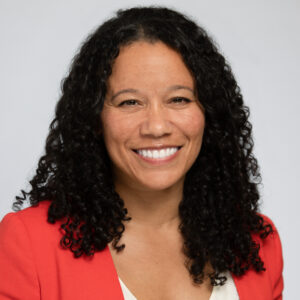The gap between overall assets held by different racial groups, known as the racial wealth divide, continues to be prevalent nationwide. Just as income inequality has risen in recent decades, wealth inequality has followed. Historic and ongoing discrimination in housing, employment, and education create barriers to economic mobility and generational wealth for families of color. The COVID-19 pandemic further widened inequities, disproportionately devasting communities of color with higher rates of job and income losses and greater difficulty securing basic needs. As such, municipalities are uniquely poised to narrow the racial wealth divide in their communities through many different strategies. Local leaders can play a key role in promoting the well-being of residents by examining the ways in which they can address historical and systemic racial disparities to promote equitable economic stability and mobility.
In 2022, the National League of Cities published a guide on Municipal Strategies to Narrow the Racial Wealth Divide, intended to give municipalities a framework for addressing racial wealth disparities in their communities and offering promising examples from cities, towns, and villages. In addition to providing the framework, the guide set out five strategies for municipalities to consider as they seek to tackle this pervasive issue: Entrepreneurship and small business development; workforce development; homeownership; income, savings, and debt reduction; and municipal administration and operations. This blog is the first part of a new four-part series that will offer additional insights into these strategies. Starting inside municipal government, one effective way to align government practices with efforts to respond to the racial wealth divide is through equitable procurement.
Why Equitable Procurement Matters
Municipal procurement processes were often designed to ensure that contracts get awarded based on merit, not connections. But many of these processes fall short in addressing the consequences of historical discrimination and structural racism. Narrowing the racial wealth divide requires intentional, specific, targeted investments in historically excluded communities, and policy changes that sustain these investments. Some cities mitigate these challenges by incorporating racial and gender equity goals into their procurement plans. If your community has an equity statement, it may spell out targeted populations or neighborhoods to incorporate into your municipality’s procurement priorities. Many cities have set priorities for a certain percentage of contracts or dollars to be awarded to Minority and Women Owned Business Enterprises (MWBEs). Some cities have gone further, stipulating that these businesses should be local. This keeps your local tax dollars circulating in your community, building community wealth and providing services that your community needs.
Implementing more equitable procurement processes requires a combination of long-term and short-term strategies. Short term strategies can include things like unbundling contracts; setting MWBE procurement goals; and tracking where your contracts are being awarded. Longer-term strategies include commissioning disparity studies; investing in MWBE business development in particular sectors; and creating set-aside dollars (sheltered markets) specifically for MWBE businesses. It is important to begin by assessing where you are, identifying where you want to go, and putting a plan in place to get there.
Every community starts from a different point, and selecting a path to move forward does not have to require huge changes. Many communities recognize that they don’t have the quality of baseline data they need to set clear targets, making data collection their clear starting point. When the City of Anchorage, AK realized they wanted to improve their data collection to better understand who was applying for public contracts, they changed their vendor registration in 2021 to request demographic information, and the city now requires contract awardees to respond to a question about their race and gender. Other communities have a robust equity baseline to draw from and are ready to make significant investments. The City of Buckeye, AZ saw the building of a new airport as an opportunity to implement a robust Disadvantaged Business Enterprise plan, including unbundling contracts to provide more opportunities to smaller enterprises, since small-business set-asides are precluded by Buckeye’s procurement rules.
Recognizing the pivotal role of equitable procurement in addressing the racial wealth divide, cities can take deliberate steps to empower MWBE businesses, contributing to greater economic stability and prosperity for all residents. For further guidance on implementing equitable procurement in your community or other municipal strategies to narrow the racial wealth divide, NLC has many resources to offer.
Stay tuned for more from NLC’s strategy series on how cities can narrow the racial wealth divide through prioritizing equitable workforce development practices; addressing disparities in income, savings, and debt faced by communities of color; and engaging methods to increase Black, Indigenous, and People of Color (BIPOC) homeownership.











